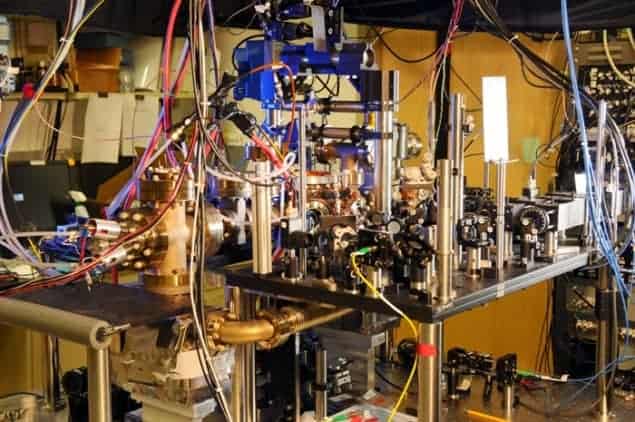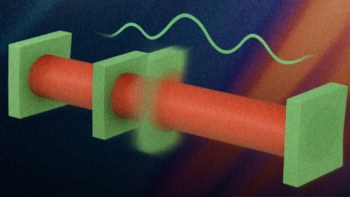
Researchers in the US have built an atomic clock that is nearly 10 times more stable than the previous best device. This was achieved using two specially built optical-lattice clocks. Time can be measured extremely accurately using atomic clocks, which can have many applications including global positioning and long-baseline interferometry – areas that could be improved with this new device. The researchers’ work could also potentially be used in gravitational-field sensing as well as in testing the true constancy of fundamental constants.
A clock’s stability is how much its speed varies, whereas its accuracy, or uncertainty, is how much that speed can differ from the correct value. No clock can ever be more accurate than it is stable because even if it were perfectly accurate at one instance, it would not stay so. Unlike the more familiar trapped-ion clocks, which use a single ion trapped by electric fields, optical-lattice clocks trap many identical neutral atoms (in this case about 5000) in the standing-wave potential of two counter-propagating laser beams. The frequency of a specially selected atomic transition in these atoms is measured simultaneously using the same laser and is then used as the clock’s reference frequency.
Precise measurements
In principle, optical-lattice clocks can be much more stable than single-ion clocks because much of the fundamental quantum uncertainty limiting the precision of a single-particle measurement can be averaged away, but this stability boost had never been realized before because of frequency fluctuations of the measuring laser. “The level of the effect [of the fluctuations] on the two types of atomic clock is actually, in absolute terms, the same,” says atomic physicist Andrew Ludlow of the National Institute for Standards and Technology in Boulder, Colorado, “but it turns out to be so much worse for these large ensembles of neutral atoms because their fundamental limit can be so much lower than the laser noise.”
In 2011 Ludlow’s team, together with colleagues at East China Normal University in Shanghai, demonstrated a laser that is much less prone to frequency fluctuations. The laser, which was phase-locked to a specially designed Fabry–Perot cavity, could measure electronic transitions extremely precisely but the researchers had only a single atomic clock at the time, giving them no way to measure that clock’s stability.
Record stability
In the new research, the group in Colorado set up two clocks side by side. Both measured the frequency of the same transition in ytterbium atoms trapped in optical lattices but the engineering details of the two clocks were different, ensuring that noise would affect each clock differently. The two clocks were supplied from the same frequency-stabilized laser but the light used to stimulate the electronic transitions in the two optical lattices was modulated separately, thus making the two clocks effectively independent. After seven hours, the researchers found that the times measured by the two clocks differed by just 1.6 parts in 1018 – less than a tenth of a second in the age of the universe.
Having established the stability of the clocks, the team is now studying external influences on their rates. “The last time we did a full evaluation of the clock uncertainty was in 2009,” says Ludlow, “when we showed that the uncertainty was nearly at a level of 1 part in 1016. There were a couple of effects that dominated and we’ve since made some nice measurements that are reducing those uncertainties.” The researchers are now evaluating the remaining uncertainties, in the hope that they can bring the clock’s accuracy down to the level of its stability.
Beyond the lab
Ludlow would also like to make the clock robust enough to be taken out of the lab, which would open up some of the suggested applications of super-accurate clocks. Researchers have suggested that the change in a clock’s ticking rate at different points on the Earth’s surface could measure the local strength of the Earth’s gravitational field to give geological information about the composition of our planet. Other proposals involve putting the clocks in space to look for quantum effects in gravitation.
Helen Margolis, an atomic and laser physicist at the National Physical Laboratory in Teddington, UK, believes that the huge increase in stability marks a significant achievement and shows that any external influences are varying slowly, giving the team a chance to characterize and correct for them. She suspects, however, that the black-body shift caused by the temperature of the surrounding apparatus “will be quite a challenging one to deal with at the 10–18 level”. Modifying the clock for use outside the laboratory will be more challenging, she believes: “I suspect there would be a lot of work still to do before it could be reliably used for those applications.”
The research is published in Science.



